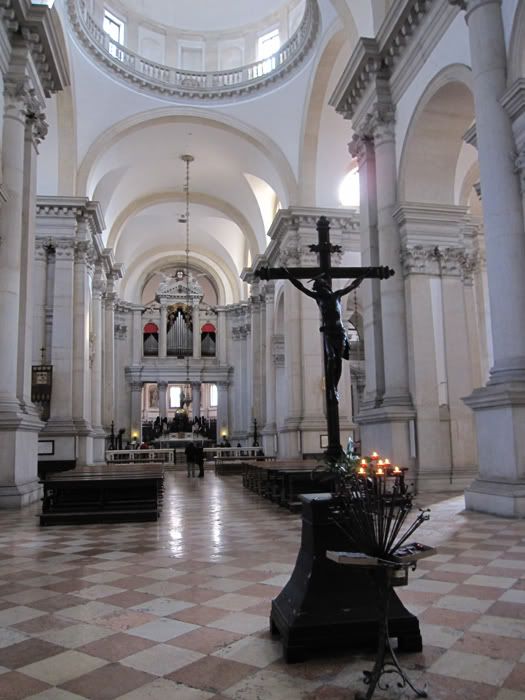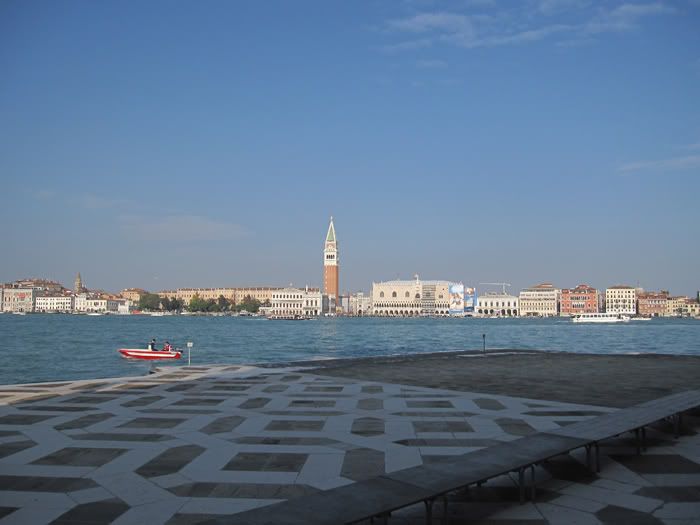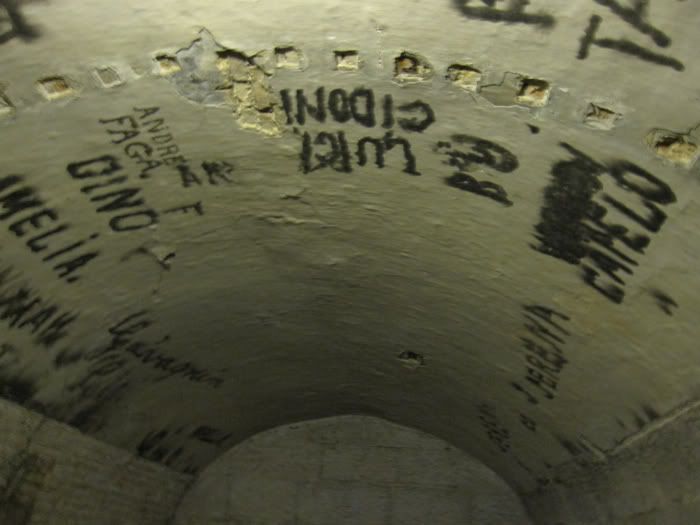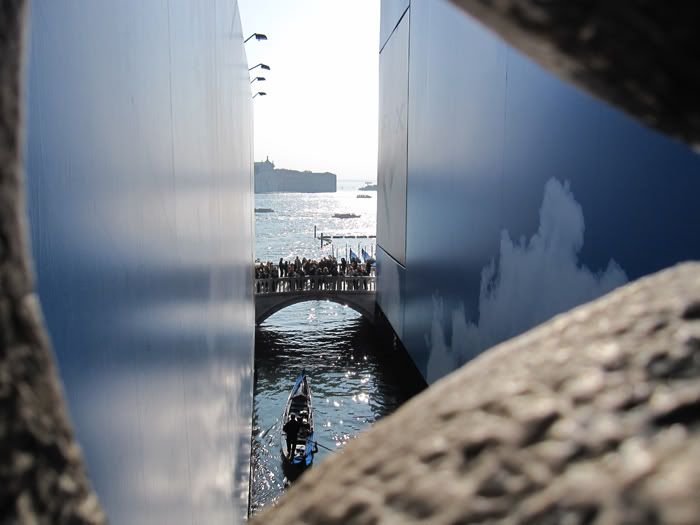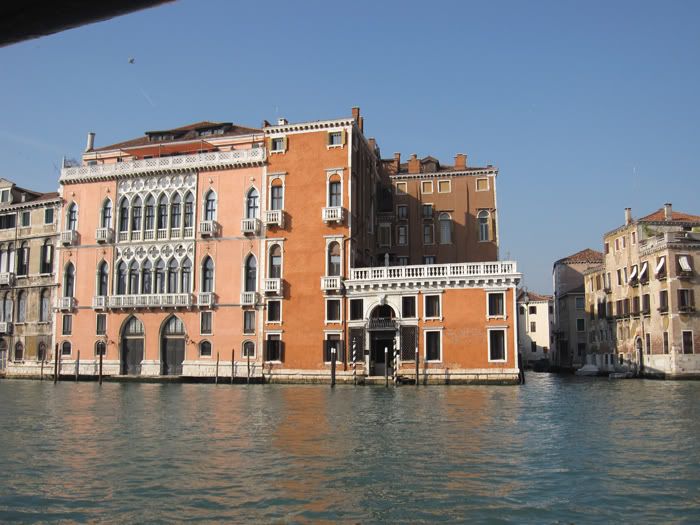I am now proud to say that after having attracted the wrath of supporters of South Korea's far-right government as a result of my commentaries from Seoul in 2008, I am now attracting similar wrath from the People's Republic of China, where some bloggers are leaving me comments about how obscene the contents of this free-wheeling, Western liberalism-corrupted blog are. Of course, none of them will ever squeak past the moderation stage. It is notable that the Chinese are making their comments in Simplified Chinese, whereas the Koreans did in English, the language of the almighty superior masters of the US neocon movement; nevertheless, even between the far-right South Korean government and the nominally communist Chinese government, I see a common thread - that of Confucian authoritarianism.
In the meantime, I am glad to keep on traveling to places where Confucian authoritarianism is rightfully dismissed as backward barbarism. Like permissive Europe. And my recap continues - this covers November 1st, 2009, and my walks throughout the marvelous Italian water city of Venice.
As noted in my previous post, my Venice stay was cut from two planned nights to one, due to my mother's complaints. In the morning, I took the hotel's nice continental breakfast, then checked out, expressing my regrets to Signore Piero, the handsome son of Signore Roberto, the proprietor of the hotel who had checked me in. After paying for just one night, I did return to the hotel's guestbook, and did put in positive notes there - my mother's protests notwithstanding, I did like Pensione Guerrato, recommend it as heartily as Rick Steves does, and intend to return there on a future Venice visit.
I wasn't quite done with Venice, however; when I bought the water bus ticket, I made sure to choose the 12-hour pass at €16, since after getting to Tronchetto to load the car up, I wanted to come back into town to cram as much sightseeing as I could into the day. I was not going to leave this unique place without at least scratching the surface.
I am using the No. 2 water bus to get around. Starting at Rialto (or in some cases, St. Mark's), it travels up the Grand Canal toward the train station, Piazzale Roma, and Tronchetto, then continues on around the western periphery between Venice proper and an island to the west, before finishing at St. Mark's (and runs the other direction as well). For the Grand Canal portion only between St. Mark's and Piazzale Roma, the No. 2 runs as an express service, while the No. 1 makes all local stops.
And riding around in a water bus can give me some really lovely views of some of the buildings along the way, like the above. Only in Venice.
The last stop on No. 2 before it terminates at St. Mark's is San Giorgio Island, home to this lovely cathedral. I disembarked to check the place out.
Although the cathedral comes with its own Campanile-like tower that offers great views (the tower is very visible when looking from St. Mark's), I refused to pay the admission.
This is the interior of the cathedral. Small and cozy, a contrast from the grand cathedrals I tend to see elsewhere in Europe and North America.
This cathedral's claim to fame is Tintoretto's rendition of the Last Supper. It was one of the paintings I had studied in my college art humanities class, as a contrast from the earlier Michelangelo version and its Renaissance geometric balance.
And now I'm looking back at St. Mark's Square.
In front, the water is almost up to the pavement level. It's high tide, and back at Rialto Bridge as I was leaving the hotel, I had noted that the water was starting to flood a sidewalk.
Venice had been built on a former sandy river delta (the river is today's Grand Canal), that had shrunk to an island 2.5 miles off the shore due to sinking. The sinking continues, and global warming and the resulting rise in sea levels don't help either. And sure enough, after I leave on this day, Venice would see an Acqua Alta - or High Water - that left St. Mark's Square under two feet of water on Christmas.
Now I am back at St. Mark's, and my next sight will be the Doge's Palace (Palazzo Ducalo), Venice's greatest sight. The Doge was an "elected" leader of Venice who nevertheless wielded dictatorial powers, and because of Venice's status as a maritime power and a trade powerhouse, the Doge was easily the most powerful man in Europe.
That is the Bridge of Sighs, which connects the palace to its prison annex. Condemned prisoners, as they are led away to their cell, would sigh here, looking out toward the beauty of Venice and knowing that it would be a long time before they would see it again. A psychological taunt, much like Alcatraz that's so near, yet so far, from San Francisco.
Both the palace and the prison annex are undergoing facade cleaning/restoration. The scaffolding is covered with advertisement, in order to generate income for the city government. This is controversial, of course.
Behind me along the waterfront, African immigrants are peddling fake purses and other fashion goods. While they are illegal - by buying from them, even I break the law and become subject to a €1,000 fine - they somehow find ways to keep themselves in business.
I have now paid admissions and entered the Doge's Palace. This staircase would've been where the visiting guests were welcomed into the palace.
The palace's elements are like other palaces' - including the Residenz back in Munich. In other words, propaganda elements to assert the power, legitimacy, and superiority of the inhabitant. Now that I am a week into this trip, I am starting to feel tired of the palaces. My mother's interest in home decorations leads her to palaces, while I would rather hit a museum for art history, which she can't stand.
The Doge's Palace does not offer a stand-alone admissions ticket. Starting this day, for the winter season it sells a ticket which also allows entrance to the Correr Museum next door, showcasing city treasures. For the summer season, the ticket costs a bit more, and I can choose from one of seven additional museums throughout Venice and nearby islands. Although I bought the winter combination ticket, I really didn't feel like going to Correr.
At least this is preferable to stuffy royal decorations. I am in the prison annex, and this is the ceiling of one of the cells, with prisoners' graffiti.
Casanova was known to have spent some time in this prison himself. His love prowess was such that according to Rick Steves' guidebook, when Venice's police was out in full force trying to apprehend Casanova, Casanova himself was enjoying some wild sex with the police chief's wife!
As I walk back to the palace to finish my tour, it's now my turn to peek out from the Bridge of Sighs, and sigh. Thanks to the scaffolding, the view out isn't as beautiful as I'd like.
I walked back in the direction or Rialto Bridge, and had a slice of pizza in the vicinity, thankfully in a pizzeria that was not too touristy.
Now, I am at a water bus stop for the No. 1, trying to get in the direction of Accademia, then walking from there back to St. Mark's Square, in time to enter St. Mark's Basilica, the other major Venice sight. The basilica, of course, had been closed in the morning due to the Sunday mass.
Loving this Grand Canal scene. The Grand Canal homes, back in their heyday, were the most opulent palaces/residences in the city. They still look grand.
I can also spot a water taxi. Here in Venice, every vehicle is water vehicle - even UPS delivery trucks have to be boats.
Now moving on toward Accademia. A look at more Grand Canal palaces, as well as a narrow side canal, one of many.
Historical preservation laws prevent major remodeling and demolition, and too often it's easier to let the buildings decay than to modernize them. Also, the rising water level also means for some of the buildings, the ground floor is no longer usable due to flooding.
This is clearly a city that is slowly dying, or at least becoming a tourist trap rather than a real city, as the residents flee. But because of the tourist traffic, efforts are being made to control water levels and ensure Venice's existence for many, many more years.
As mentioned in the last post, the Grand Canal can be crossed by only four bridges: two near the train station, one in the middle (Rialto), and one toward the south end (Accademia). To make crossings easier, traghetti (singular: traghetto) operate at seven points along the Grand Canal. The traghetti are retired gondola boats that are converted to shuttle duty, and cost 50 cents to ride; as they are privately operated independent of the mass transit, they don't accept transit passes.
Of course, the gondolas themselves are iconic of Venice as well, but prices are pretty high for a 50-minute ride. My mother didn't seem too interested, and I didn't feel like riding without her either, so I guess a Venice gondola ride will have to wait for a future visit.
I did get to St. Mark's Basilica, and waited a bit in line until its opening time. But its true gems are in a paid area, an upstairs museum that houses the original four horses from Constantinople (the current ones outside are modern replicas) and other relics; again, I refused to pay. The sanctuary was rather a dud.
At this point, I didn't see much point in extending my Venice experience. Walking through the crowds was not too fun, my mother was sick and tired of the place, and even for me, I wanted to be somewhere with more open space, and wanted to come back to Venice on a future visit to explore my favorite sights in-depth at a more leisurely pace. Besides, I wanted to get going toward my next destination, Switzerland, and try to get to a comfortable hotel on the way for the night.
Now I am back on the No. 2 water bus, returning from St. Mark's to Tronchetto via the periphery route. This is my farewell look at Venice. The crowds, the decay, and my mother's complaints really put a damper in my mood, but from this vantage point, it looks fabulous. And the fact that such a lovely city can rise out of the water, in itself, is simply incredible. Venice is one of those places that I didn't love too much while I was there, but lingers in my mind long after I left for good.
Back at Tronchetto, my parking came out to be €21, the 24-hour rate. I exited Venice the same way I came in - Liberty Causeway, drive through Mestre, and Autostrada 4. I decided to push west and just stop at some hotel when I got tired; I pushed past Verona, where I had come in via Autostrada 22, without stopping. I did stop at a nearby rest stop for a nap and a snack, during which I could hear German (!) national anthem in the concessions area (turns out, it was a telecast of a soccer game) and see some Italian men flock around the Mercedes-Benz (the E550 with a German export plate is certainly an unusual sight in Italy, and in any case, the E550 designation is for North America only, the European domestic models are designated as E500 even with 5.5L engine displacement).
Continuing to push west took me through some scenic areas, interspersed with sizable towns, though I continued to fight the Italian drivers and their reckless driving. It felt a lot like Los Angeles, though I must make it clear that unlike Los Angeles drivers, at least Italian drivers know how to drive, they simply show no respect to the law. Autostrada 4 continued to have three smooth lanes, increasing to four once I entered the Milan area. The tollway ended there, I paid another €18 or so in tolls, and I transferred to Autostrada 9, heading north through two turnpike-style toll booths to the Lake Como area and the Swiss border.
I exited at Como South exit, right after the last turnpike toll booth, when I spotted some "Drive Motel" signs guiding me off the autostrada. I had trouble finding Drive Motel, and after a while I switched my search over to a Hotel Ibis at €69. But I had even less luck finding Ibis, so I reverted my search to Drive Motel. Its signs appeared alongside signs for Hotel Cruise, which turned out to be its sister property. I eventually found the joint property, to find a nice surprise; in this case, the "motel" referred to a motor hotel, not a cheap hotel, and that meant that check-in and check-out were drive-through, and every room had its own garage. I went to the drive-through check-in, where a light-skinned, blue-eyed blonde greeted me (she certainly looked more Northern European than typical Italian), and advised me that while a night at the Drive Motel would cost me €95 with no breakfast, checking in on the Hotel Cruise side would be €90 with breakfast. I heeded her advice, went around to the Hotel Cruise side, and checked in for one night. This was a very modern, nice property, and I was glad to stay there - and so was my mother, thanks to television service.
The next morning would have me continue my journey. Como is on the Swiss border, so most of my driving would be in Switzerland, and I would find myself in Interlaken, my destination, by early afternoon.


